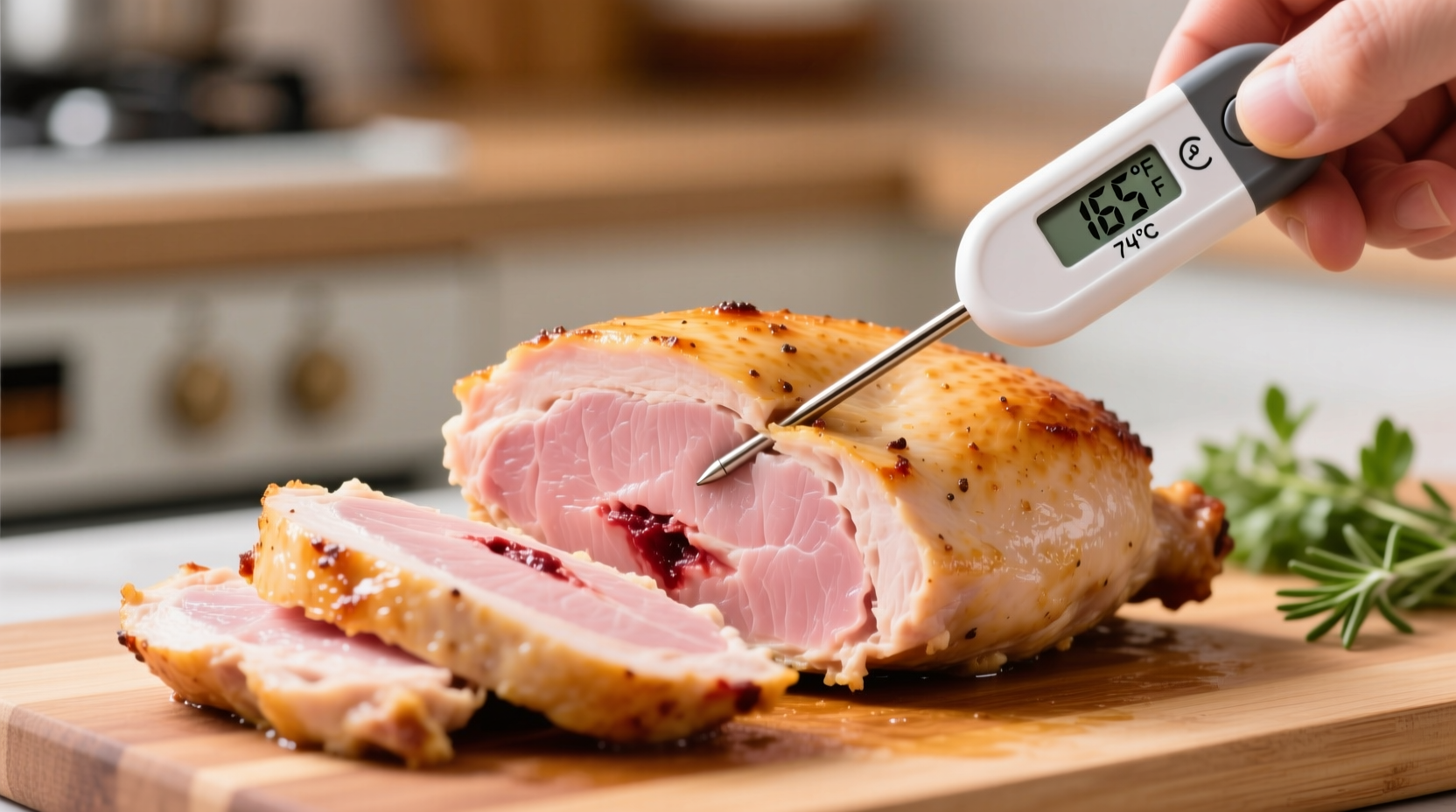The safe minimum internal temperature for cooked chicken is 165°F (73.9°C) according to the USDA Food Safety and Inspection Service. This temperature destroys harmful bacteria like Salmonella and Campylobacter that can cause foodborne illness.
When you're cooking chicken, getting the temperature right isn't just about doneness—it's a critical food safety requirement. Whether you're preparing a simple weeknight dinner or hosting a holiday feast, understanding the precise temperature needed to safely cook chicken protects you and your loved ones from potentially serious foodborne illnesses.
Why 165°F Is the Gold Standard for Chicken Safety
For decades, food safety experts have established 165°F as the minimum internal temperature that eliminates dangerous pathogens in poultry. At this temperature, harmful bacteria including Salmonella, Staphylococcus aureus, and Campylobacter are destroyed within seconds. The USDA's Food Safety and Inspection Service maintains this standard because undercooked chicken remains one of the most common sources of foodborne illness in American households.
| Food Type | Minimum Internal Temperature | Rest Time |
|---|---|---|
| Chicken, Turkey, Duck (all parts) | 165°F (73.9°C) | None required |
| Ground Meats (beef, pork, veal, lamb) | 160°F (71.1°C) | None required |
| Beef, Pork, Veal, Lamb (steaks, roasts, chops) | 145°F (62.8°C) | 3 minutes |
| Fish and Shellfish | 145°F (62.8°C) or until flaky | None required |
This temperature standard applies to all chicken products—breasts, thighs, wings, drumsticks, ground chicken, and even turkey. Unlike red meats where lower temperatures might be acceptable with proper rest time, poultry requires immediate pasteurization at 165°F due to how bacteria distribute throughout the meat.
How to Accurately Measure Chicken Temperature
Proper thermometer use makes all the difference between safe and risky chicken. Follow these professional kitchen practices:
- Use a reliable instant-read thermometer—digital thermometers provide the most accurate readings in 10-15 seconds
- Insert at the thickest part of the meat, avoiding bones which can give false high readings
- Check multiple spots in larger pieces like whole chickens or roasts
- Sanitize between measurements when checking multiple pieces
- Verify before removing from heat—don't wait until after resting
Many home cooks make the mistake of relying on visual cues like "clear juices" or color changes. The USDA explicitly states these methods are unreliable—chicken can appear done while still harboring dangerous bacteria. Only a proper thermometer reading guarantees safety.

Special Cooking Scenarios and Temperature Considerations
Certain cooking methods and preparations require additional attention to ensure chicken reaches safe temperatures:
Stuffed Poultry
When cooking stuffed chicken or turkey, both the meat and the stuffing must reach 165°F. The stuffing often lags behind the meat temperature, creating a potential hazard. The USDA recommends cooking stuffing separately to ensure it reaches safe temperatures without overcooking the poultry.
Grilling and Smoking
Low-and-slow cooking methods require extra vigilance. While smoking chicken at 225-250°F develops delicious flavor, the meat must still reach 165°F internally. Use a leave-in probe thermometer to monitor progress without constantly opening your smoker or grill.
Sous Vide Cooking
With sous vide, you can cook chicken at lower temperatures for extended periods to achieve the same pathogen reduction. The FDA Food Code allows holding chicken at 145°F for 8.5 minutes or 150°F for 2.8 minutes to achieve equivalent safety to the instant 165°F standard. This method requires precise temperature control and timing.
Common Misconceptions About Chicken Cooking Temperatures
Several persistent myths could put your health at risk:
- "The juices running clear means it's done"—USDA research shows chicken can appear fully cooked while still below safe temperatures
- "I've eaten undercooked chicken for years with no problems"—foodborne illness has a delayed onset (6-48 hours), and severity varies by individual
- "Restaurant chicken is often pink inside, so it's fine"—professional kitchens use calibrated equipment and follow strict protocols that differ from home cooking
According to CDC data, Salmonella causes approximately 1.35 million infections, 26,500 hospitalizations, and 420 deaths in the United States every year, with undercooked poultry being a primary source. Following the 165°F standard significantly reduces your risk.
What Happens After You Remove Chicken From Heat
Unlike red meats, chicken doesn't benefit from significant carryover cooking. The temperature typically rises only 2-5°F during resting. This means you must reach 165°F before removing chicken from your heat source—don't rely on resting to bring it up to temperature.
Resting chicken for 3-5 minutes after cooking allows juices to redistribute, improving texture and moisture retention, but it doesn't provide additional safety margin. Always verify the temperature has reached 165°F before considering the chicken safe to eat.
Thermometer Selection Guide for Home Cooks
Not all thermometers deliver restaurant-quality accuracy. Consider these options based on your cooking frequency:
- Instant-read digital thermometers ($15-30): Best for most home cooks—fast, accurate readings in 10-15 seconds
- Leave-in probe thermometers ($30-60): Ideal for roasting or smoking—monitors temperature continuously
- Thermometer forks ($10-20): Convenient but less accurate—best for casual grilling
- Disposable temperature indicators ($5 for pack): Single-use option for checking doneness without cross-contamination
Calibrate your thermometer regularly by testing in ice water (should read 32°F/0°C) or boiling water (212°F/100°C at sea level). The National Institute of Standards and Technology recommends annual calibration for frequently used thermometers.











 浙公网安备
33010002000092号
浙公网安备
33010002000092号 浙B2-20120091-4
浙B2-20120091-4